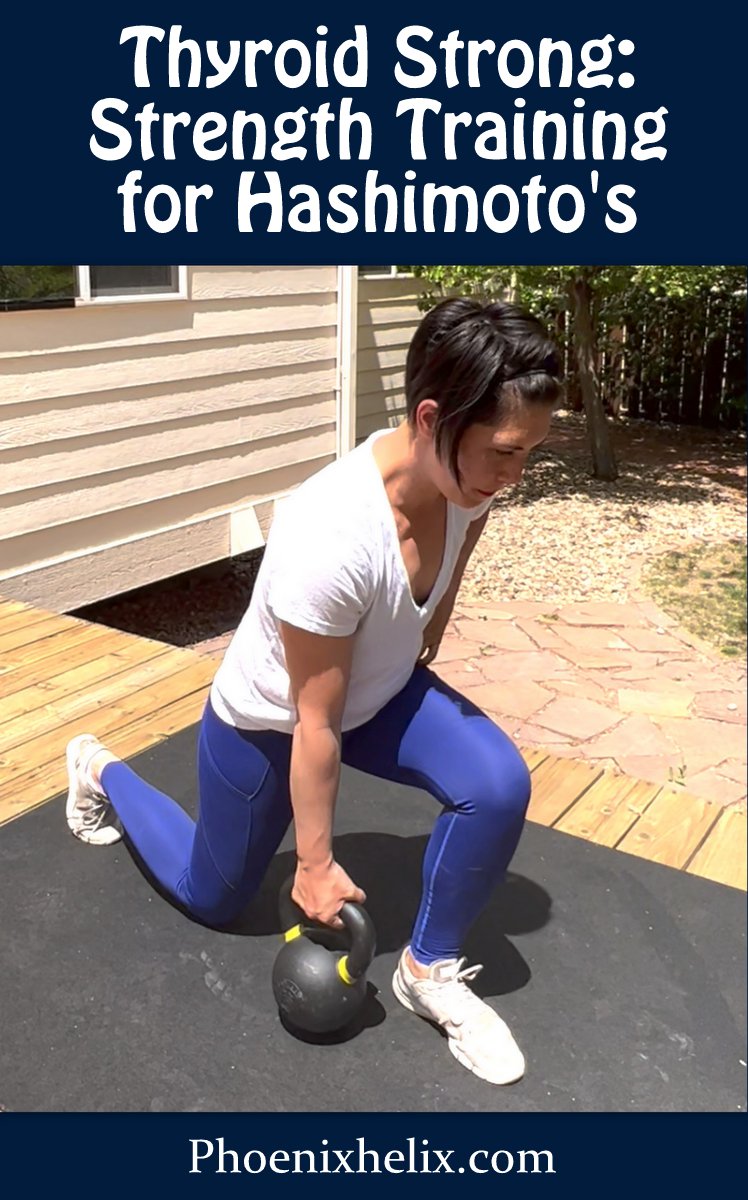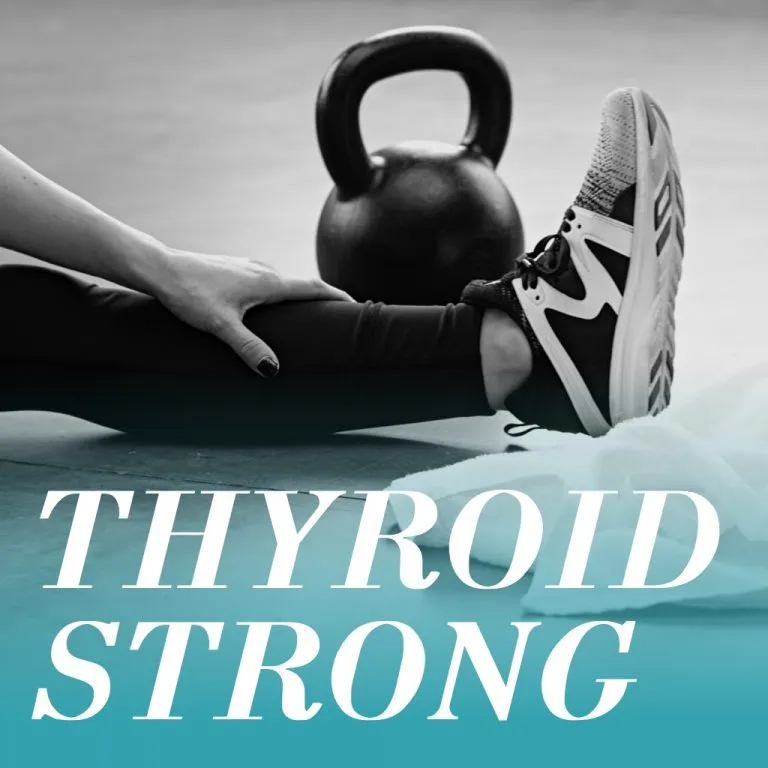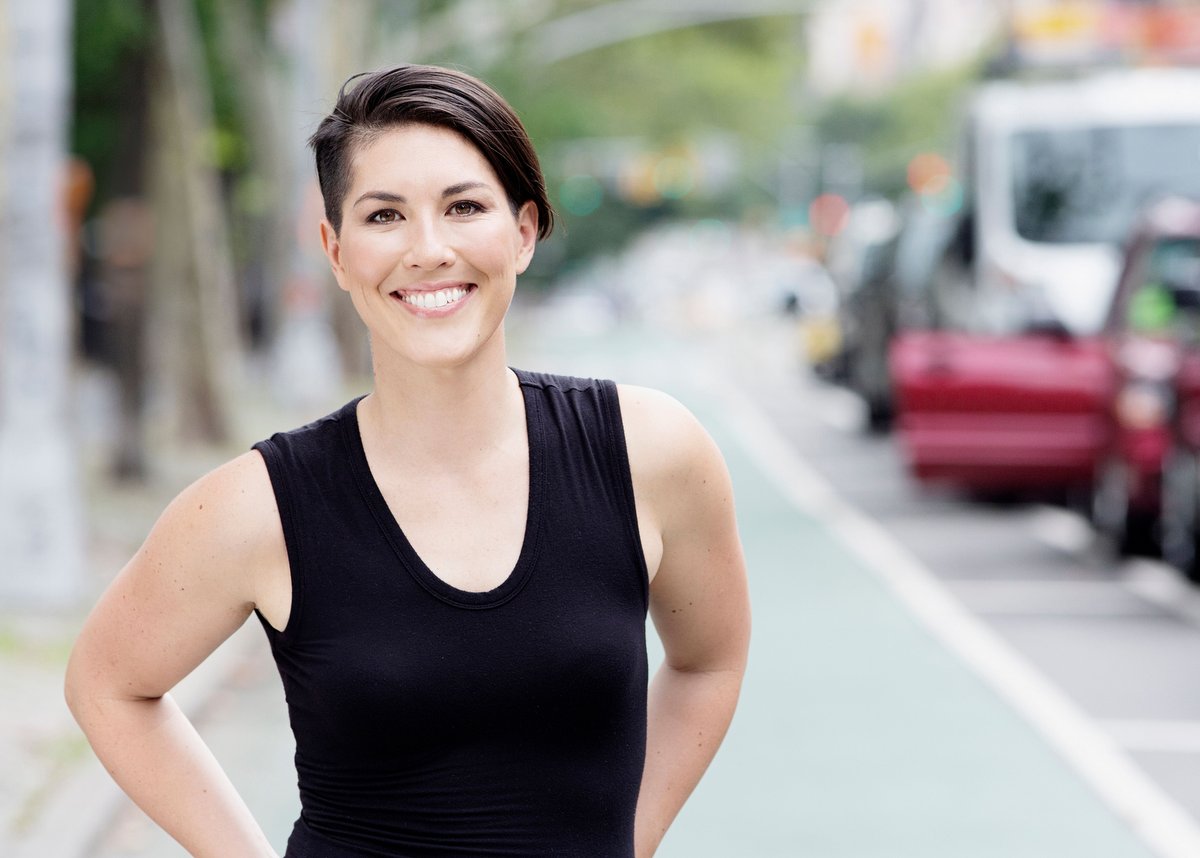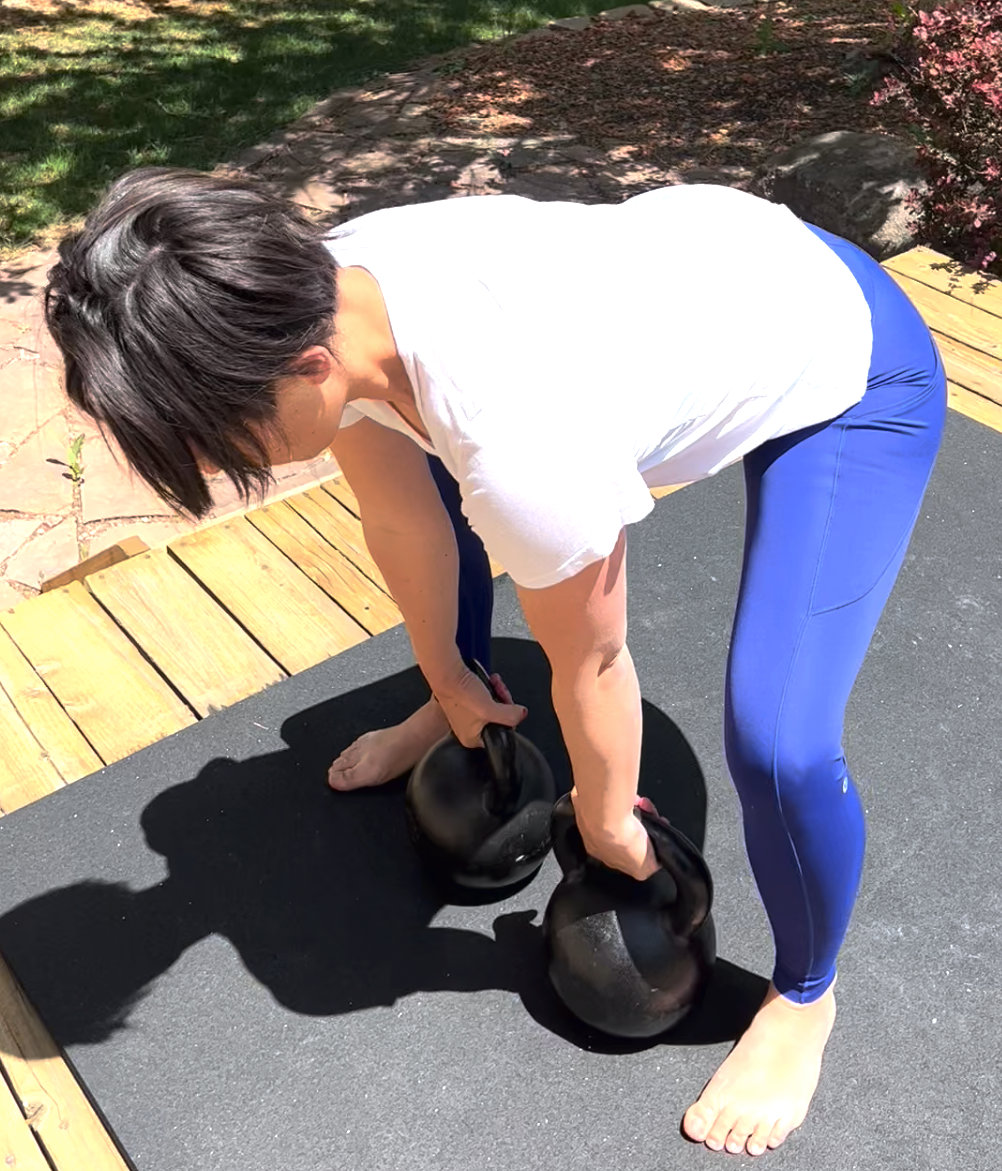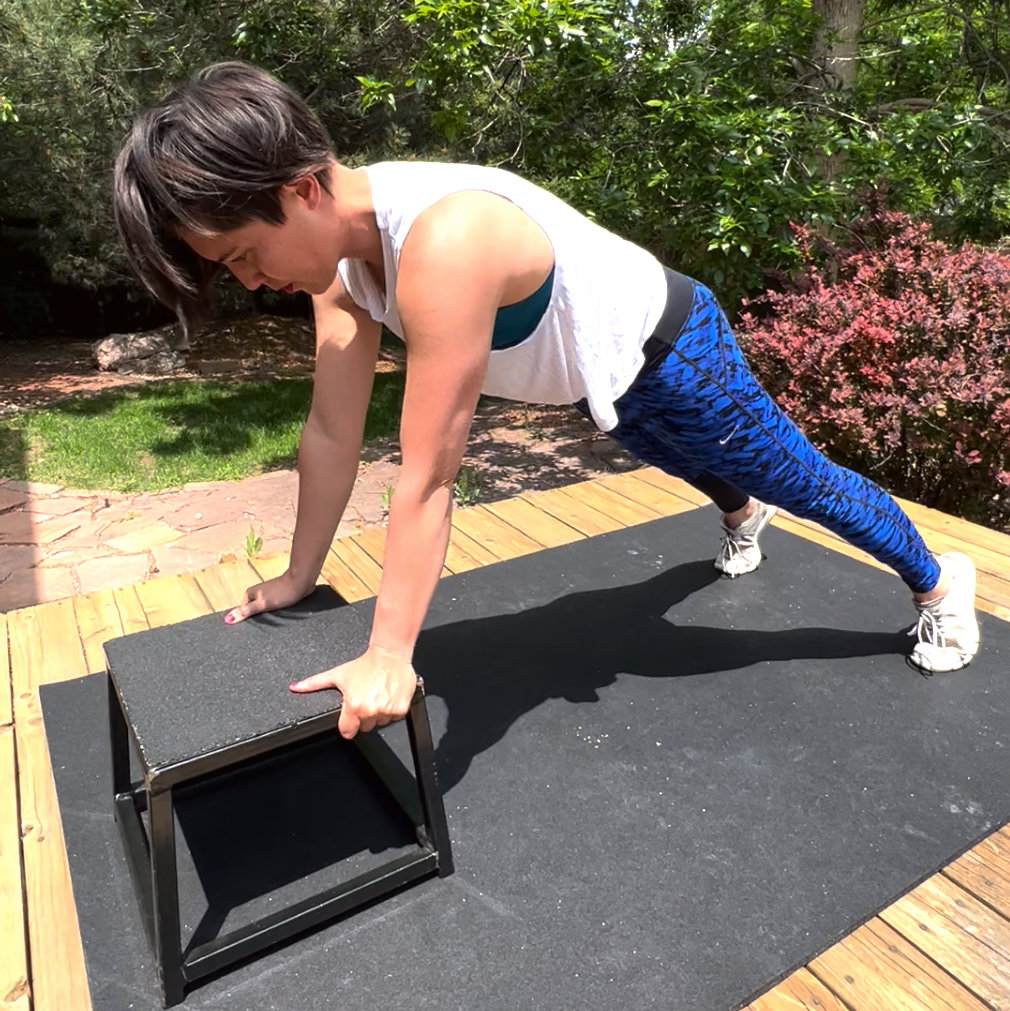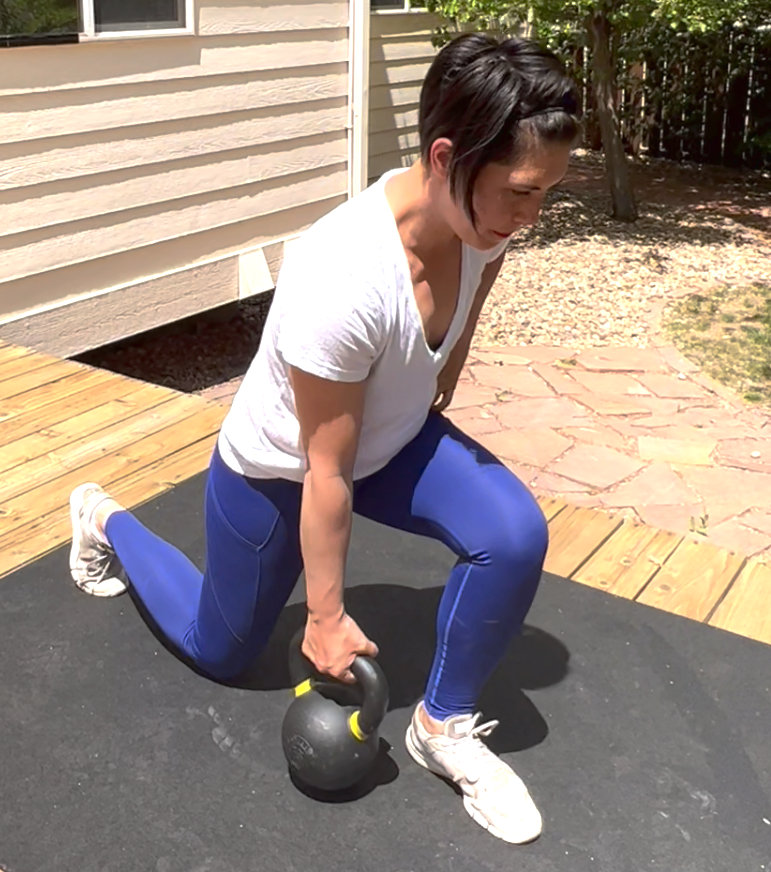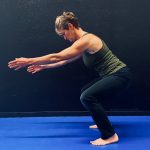“When done properly, strength training helps lower inflammation in the body, improves the immune system, and lowers your cortisol (stress hormone) afterwards.”
~ Dr. Emily Kiberd
The Autoimmune Exercise Series
My goal with this exercise series is to profile different forms of exercise that may be especially beneficial to people with autoimmune disease. Often, after an autoimmune diagnosis, the exercise we did in the past no longer benefits our body. Instead, workouts may cause autoimmune flares. It’s disheartening and confusing when this happens. However, it doesn’t mean we should stop moving altogether. Research shows that exercise improves the health of people with autoimmune disease, whereas inactivity can actually increase inflammation.
The trick is finding the right form of exercise for you, and that might change based on your current level of symptoms. In this exercise series, I’ll be featuring a wide variety of techniques to help you find the forms of exercise your body enjoys the most. You might choose one type on days when your body needs more rest, and another type on days when your body is feeling great! There is usually some trial and error in this process of discovery, so don’t give up if it takes time to figure out what works for your unique body. Perfection is impossible, but finding ways to move that are both joyful and beneficial is a goal that’s worth the effort.
Introducing Dr. Emily Kiberd
Dr. Emily Kiberd is a chiropractic physician since 2007, a kettlebell enthusiast, and founder of Thyroid Strong, the only doctor-designed program to help women with Hashimoto’s learn how to work out without the burn out. She put her Hashimoto’s into remission through diet and lifestyle changes (including appropriate exercise). She now helps other women with Hashimoto’s do the same.
Why Did You Create Thyroid Strong?
Women with Hashimoto’s often struggle with extreme fatigue and weight gain due to the hypothyroid component of Hashimoto’s. They are often told to do lighter forms of exercise: yoga, stretching, Pilates, and walking. But muscle is our metabolic engine. The more muscle we have, the more calories we burn at rest. Muscle is also the largest endocrine organ in the body, so contracting our muscle tissue has been shown to help with the turnover of thyroid hormones. That’s why I created a strength training program designed specifically for women with Hashimoto’s. Kettlebells are the core of the program. They’re very forgiving when first learning proper weight lifting form compared to dumbbells or a barbell. When used properly, kettlebells help maintain and build muscle tissue, which also boosts energy levels. When we have more energy we can do anything, including having the momentum and motivation to continuing working out.
How has this type of exercise benefited you personally?
Personally, strength training with kettlebells helped get rid of my joint aches and muscle pains which is common with women with Hashimoto’s. Doing it the Thyroid Strong way – with progressive overload, heavier weights, low reps, and long rest breaks – helps me continue to workout without pushing myself into a Hashimoto’s flare, or feeling like a I need to nap for three days on the couch.
Thyroid Strong is designed for women with Hashimoto’s. Would anyone else benefit from this form of exercise?
Honestly, I’m a big believer that every person on the planet who can move their body would benefit from strength training three times a week. According to the CDC, only 24.2% of Americans over the age of 18 hit the Physical Activity Guidelines for both aerobic and muscle-strengthening activity. This is a massive deficit in our society and major contributor to chronic disease.
Sample Exercise: Kettlebell Deadlift
- I’ve been a chiropractor and movement specialist for 15 years. Clinically, I’ve found the women with Hashimoto’s often have joint laxity or joint hyper-mobility, especially when the knees go into hyperextension (when the knee bows backwards when standing). I like deadlifts because they strengthen the hamstrings and glutes, while creating stability in the core, and also creating stability around the knee and hip joints.
- Position: Copy my position in the photo above. Place the kettlebells between your feet. Line the handles up with the the spot on your feet where your shoelaces are tied (if you’re wearing shoes). Squat slightly, making sure your knees don’t go past your toes. Keep your back flat, and fold your belly to the tops of your thighs. Grab the kettlebells with straight arms, but don’t lock your elbows.
- Kettlebell Weight: I recommend starting with two 12 kg bells, or 50 lbs. You need enough resistance to give the muscles something to contract against.
- Movement: Grab the bells and take a deep inward breath. As you stand up with the bells, exhale forcefully and squeeze your heels together without moving your feet. Then set the bells back to the floor, returning to the same body position shown above. I recommend beginners start with 3 reps.
- Here’s a video demonstration.
Sample Exercise: Elevated Plank to Push-Up
- The plank is a bodyweight exercise that engages multiple muscle groups at the same time, strengthening your core while also working your shoulders, arms and glutes. Sometimes a plank position on the floor can be too intense for women with Hashimoto’s. I like the modification of doing the plank from an elevated surface to get the form dialed in properly. You can then add a push-up for an extra challenge.
- Position: I like the side of a couch or a kitchen countertop to start. Copy my position in the photo above. You want your spine to be straight – avoid dropping your head forward, and make sure your hips are in line with your back (not swayed toward the floor or butt raised in the air). Keep your arms straight, but don’t lock your elbows.
- Movement: The first part of this exercise is a static hold. Remember to breathe. For beginners, I recommend holding the plank position for 1 to 5 breaths. Start where you are, and over time you can slowly increase to 15-20 breaths. If you’d like to try a push-up as well, lead with your chest to tap the surface, then use your exhale to push your bodyweight away. I start beginners with 1-3 reps, and increase 10% each week.
- Modifications: If you experience wrist pain when leaning on your couch or counter for this exercise, you can use a push-up stand that puts your wrist in a neutral position.
- Here’s a video demonstration.
Sample Exercise: Reverse Kettlebell Lunges
- Lunges strengthen almost every muscle in the lower body – the hips, glutes, quads, hamstrings, and calves. They’re also a functional movement that improves balance and your ability to get up off the floor. But standard forward lunges can be hard on the knees, especially with the slower tendon turnover caused by Hashimoto’s. I prefer reverse lunges.
- Position: Begin in a standing position, holding the kettlebell in one hand. You’ll be stepping backward into a reverse lunge (demonstrated above).
- Kettlebell Weight: Start with just your bodyweight to get the form dialed in. Then, use an 8-10 kg bell, slowly working up to a 12 kg bell.
- Movement: Breathe in as you lunge down and back, and breathe out as you push up. You can hold your non-weight bearing arm out to the side for balance. Keep your torso straight as you move, and make sure your forward knee doesn’t sway inward. I recommend beginners start with 3 reps.
- Optional Prop: It can be helpful to set up a yoga block behind your back foot in the lunge position. That will give you some sensory feedback as you move, to help guide your form.
- Here’s a video demonstration.
Can these exercises be adapted around pain and mobility challenges?
From my 15 years of experience seeing patients in person, especially observing the Hashimoto’s patients from a movement and strength perspective, my specialty is helping women get strong while also working around mobility and pain issues. There is a module inside Thyroid Strong called “Move Out of Pain” so you can do exactly that – use your movement patterns to get yourself out of pain in 10 minutes. This comes from my background of studying how babies learn their movement patterns from a neuro-developmental perspective, aka how babies in the first year of life hit their movement milestones. Then I built this into a movement flow I give to women inside Thyroid Strong to create mobility and stability in the right places in the body. For example, if someone is having intermittent hip pain, usually there is a core stability issue and a foot mobility issue. The “Move Out of Pain” movement flow helps bring core stability, mobility in the foot, and proper joint centralization to the hip joint to remove the hip pain. I also sell a Pain Free Starter Kit as a separate program.
Where can people learn more about Thyroid Strong?
My mission:
To help women struggling with Hashimoto’s learn how to exercise to lose weight and beat fatigue, so they can feel their best and show up for the people that matter the most. I believe every woman with Hashimoto’s can feel strong and confident in her body.
My services:
- Through Thyroid Strong, I offer beginner, intermediate, and advanced programs.
- My 6-week beginner video course uses bodyweight rather than kettlebells. It’s a great option for women who have never lifted weights before.
- If you have lifted weights before, I have a 6-week intermediate video course which incorporates kettlebells.
- I also have a 12-week video course that guides people from bodyweight exercises up through kettlebells.
- I also have a monthly membership program called Stay Strong. It’s designed for people who have completed the Thyroid Strong program who want to stay motivated as part of a group of individuals doing the same.
- Lastly, I also offer 1:1 coaching.
How to connect with me:
Disclaimer
Each person’s exercise needs are unique. This exercise series is designed to introduce you to new forms of exercise that may or may not work for you. Always consult with your healthcare team before beginning a new exercise program. Also, pay attention to your body’s limits, and start slowly.
You May Also Be Interested In

